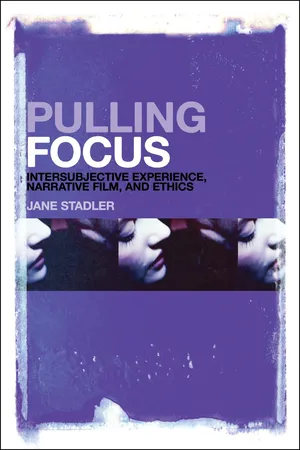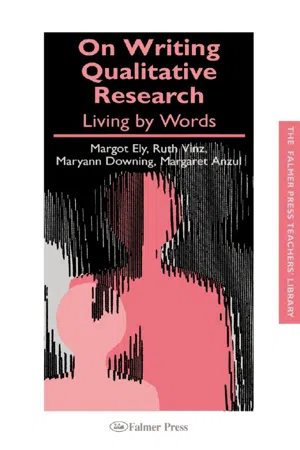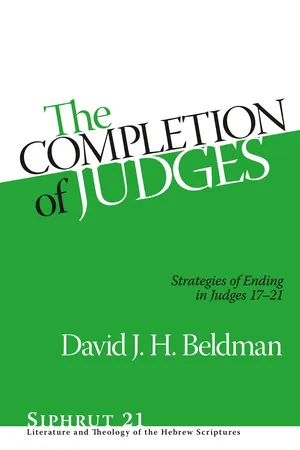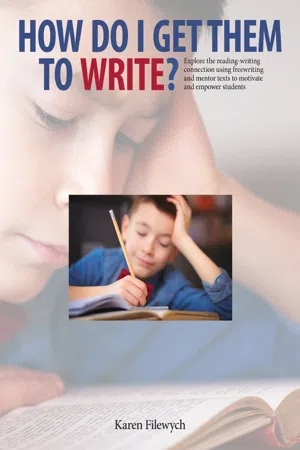Literature
Narrative Form
Narrative form refers to the structure and organization of a story, including its plot, characters, setting, and point of view. It encompasses the way in which the story is told and the techniques used to convey the narrative, such as first-person or third-person narration, flashbacks, or nonlinear storytelling. Narrative form plays a crucial role in shaping the reader's experience and understanding of the story.
Written by Perlego with AI-assistance
Related key terms
1 of 5
8 Key excerpts on "Narrative Form"
- Anthony J. Cascardi(Author)
- 2014(Publication Date)
- Cambridge University Press(Publisher)
These narratives Form, Narrative, Novel 161 and the lives and choices that they shape are in turn structured by assumptions about narrative unity, coherence, and closure that are tested in narrative writing in general, and in particular in fiction, where the influence of contingencies can yield to the imperative to achieve coherence. … Literary narratives come from our expressive acts and their narrative backgrounds; the narrative backgrounds of our acts are structured by assumptions that literary narratives help make manifest. It seems that literary narratives and personhood are, one might say, internal to one another. 12 The novel exemplifies the challenges we face in needing to make whole and meaningful forms where these are not available in advance or guaranteed. It helps “solve” the problem of binding beginnings and endings together under conditions where we have no direct access to any “ultimate” sources of truth or value, much less to the totality of experience, but have to establish those for ourselves. In the modern world, that task falls largely to the novel, although with the caveat that the novel is not a form in which meaning is ready-made. These are matters of form, not theme. To give an example, Fernando Pessoa thematizes the predicament of the problematic individual at the very begin- ning of A Book of Disquiet: “these random impressions, and with no desire to be other than random, I indifferently narrate my factless autobiography, my lifeless history. These are my Confessions, and if in them I say nothing, it’s because I have nothing to say.” 13 If this were a novel, its task would be to find some way to bind these “random impressions” together. But this is rather a book of fragments – not a novel, in part because it does not have a Narrative Form. But even within narrative works, we need to be careful to distinguish between what it means to grapple with “existential” questions at the thematic level, and what it means to address those formally.- eBook - PDF
The Critical Practice of Film
An Introduction
- Elspeth Kydd(Author)
- 2017(Publication Date)
- Red Globe Press(Publisher)
P ART II Film Form Narrative Film Learning objectives After completing this chapter, you will be able to: • Analyze the structure of a narrative; • Apply the concepts of narrative structure to the development of a short script; • Render a visual representation of a short narrative in the form of a storyboard; • Apply the basic concepts of narrative theory to the analysis of a film. Telling stories Stories are vital to how people communicate. Not only do we watch them for entertainment in movies and on television or read them in books, many of the ways we receive information about the world is through a Narrative Form. We listen to and tell stories in our daily life; when you go for a weekend to visit family or friends, you describe what is going on in your life by telling them stories and, in turn, listen to the stories that they tell you. Stories are so much part of our daily life that we take them for granted, and we are not always aware how they can be carefully struc-tured through the process of screenwriting. Yet, even as we tell the short stories of our lives to our friends, we add structures: a beginning, middle and end, connecting unconnected events to make patterns, exaggerating certain moments to heighten the drama, and leaving out details we think are irrelevant. This chapter explores how stories are created through the conventions of fiction films. In the first section we will examine the way that stories are structured, moving on to consider how a writer works to bring their vision to the screen. Then, we will explore some of the elements of the story: how stories move through time and the role of the narrator, the person or persons who are telling the story. While working with the conventions of narrative theory we will keep in mind a critical-practice approach to Narrative Form. This involves understanding and critiquing the conventions and structures of narrative practice and exploring alternative story-telling styles. 41 Chapter 3 - eBook - PDF
- S. Keen(Author)
- 2003(Publication Date)
- Palgrave Macmillan(Publisher)
2 Shapes of Narrative: A Whole of Parts Narrative is a time-bound linear form that can be heard, watched, or read. Each of these circumstances for narrative’s reception has its own effects on the length, shapes, and subdivisions of narrative, and each makes different demands on our time, attention, memory, patience, and physical endurance. Experience tells us that narrative takes a great variety of shapes, from the 30-second advertisement to the immense novel sequence. This chapter focuses on the most common shapes of prose fiction, only briefly noting oral, verse, and film forms. While ‘narrative’ conveys what all these storytelling shapes have in common, ‘narrative literature’ is comprised of a wide array of forms each with its own distinct literary history. The chapter defines these forms briefly and discusses narrative’s most typical subdivi- sions, units such as chapters, sections, or volumes, which are so familiar as not to be noticed by a reader. The traits of genres and the expectations gen- erated by conventions that play such an important role in the reader’s experience of narrative are treated at the end of the book, in Chapter 11. Though this chapter suggests some relationships between genres and shapes of narrative, its central concern is the lengths, subdivisions, and labels that mark out the units of the reading experience. Effective criticism of narrative fiction begins with accurate description and a willingness to start with its evidently simple traits, such as its length, the units that comprise it, and its overall shape. This approach has the advantage of conveying both the individual and the unique features of a work, while prompting recollection of reading experiences that may be rather distant. Few readers of George Eliot’s Middlemarch (1871–72) need to be reminded that it is a very long novel, but many would be aided by the information that it comprises a prelude, eight ‘books,’ and a finale. - eBook - PDF
Pulling Focus
Intersubjective Experience, Narrative Film, and Ethics
- Jane Stadler(Author)
- 2008(Publication Date)
- Continuum(Publisher)
14 In this way she moves closer to being able to see things from his perspective, and thus to understand how the situation is for him . The film also enunciates Helen’s subjective memories of taking the vows to become a novice. This personal memory narrative, which metonymi-cally evokes the theistic account of moral responsibility to others, motivates Helen to honor her commitment to help society’s outcasts. On another level, these narratives within narratives assist the audience in understand-ing how Helen comes to make the choices she does, potentially offering audience members the opportunity to relate their life stories to hers. The above examples illustrate that the functions of narrative are diverse and dispersed across a variety of Narrative Forms, and that narrative is an important way in which we understand human life. Narration can be conceptualized as a fundamental means of interpreting experiences and of giving structure and a communicable form to knowledge. Hunter says of narrative that: It is the means by which the meaning of lives and deeds is made known both to the actors themselves and to their community. In this light, moral choice must be seen not as a matter of logic or preference Ethics in Narrative Form and Content 25 exercised in the moment, but as a longer process intertwined with his-tory, identity, culture and life-meaning. Like reading itself, the exercise of practical reason is an act of interpretation. (Hunter 1996, 307) Thus, since individual narratives articulate the development of events as they relate to one another and unfold in time, narrative understanding is closely associated with understandings of the causes and consequences of human behavior. - eBook - PDF
- H. Porter Abbott(Author)
- 2020(Publication Date)
- Cambridge University Press(Publisher)
2) Loose and generally recognizable: These are the longer structures that we call narratives, even though they may contain much nonnarrative material. Most of these come in recognizable genres: tragedy, comedy, epic, short story; and an abundance of other genres of film, drama, poetry, and prose, either fictional or nonfictional. No one has yet come Defining Narrative 14 up with a precise way of determining when any long text no longer qualifies as narrative in this larger sense and should be called something else. But usually the defining characteristic we look for at this level is narrative coherence. You could say that, for such a text, narrative is the dominant, a concept that Roman Jacobson defined as “the focusing component of a work of art” that allows us to respond to it as, in this case, a narrative (1935: 41). 2 But here, too, there can be fuzziness, since there are texts, as Brian McHale argues, that can “yield different dominants” depending on how we read them (1987: 6). 3 Going back to the compact form of narrative, the definition that I have chosen is controversial in yet another way, since there are scholars who would also dispute my other term – “representation” – as much too broad. In the first edition of Gerald Prince’s Dictionary of Narratology (1987), he wrote that “[A] dramatic performance representing (many fascinating) events does not constitute a narrative …, since these events, rather than being recounted, occur directly on stage. - eBook - ePub
On Writing Qualitative Research
Living by Words
- Margaret Anzul, Maryann Downing, Margot Ely, Ruth Vinz(Authors)
- 2003(Publication Date)
- Routledge(Publisher)
‘Stories’ in the previous sentence is a carefully chosen word. We don’t believe stories are exclusively the stuff of imagined reality or the well-turned fabulistic tale. Stories constitute lived stories, individual and collective, retold and reconstrued. In this section of the chapter, you will read research stories and be encouraged to write them. Various tools of narrative— characters, setting, sequences of events, atmosphere, plot, theme, dialogue, motifs, figurative language, and many other literary devices—render the stories complex and significant. Storytellers learned long ago that such devices have the power to bring the reader along on a voyage of sorts. As researchers we have something to learn from them: the means to let our readers experience along with us the unfolding of the research story. Barbara Hardy (1978) has said that narrative is:…a primary act of the mind. [There is an] inner and outer storytelling that plays a major role in our sleeping and waking lives…for we dream in narrative, daydream in narrative, remember, anticipate, hope, despair, believe, doubt, plan, revise, criticize, construct, gossip, learn, hate, and love by narrative. In order really to live, we make up stories about ourselves and others, about the personal as well as the social past and future. (see page )Narrative is a method of inquiry and a way of knowing—a discovery and analysis—just as scientism and quantitative research have methods and ways. As Clandinin and Connelly (1994) have pointed out, they ‘…use the reasonably well-established device of calling the phenomenon story and the inquiry narrative. Thus we say that people by nature lead storied lives and tell stories of those lives, whereas narrative researchers describe such lives, collect and tell stories of them, and write narratives of experience’ (p. 416). We might think of narrative as a bundle of elements useful in storying—structures, points of view, spatial and temporal devices, characters, plots, themes, and, of course, a narrator or narrators. The particular version of the story is located in some partial knowledge so we cannot say that narrative reflects a reality but we can say that, with the help of the reader, narrative produces meaning and creates a version of reality. The reader participates vicariously—living in the experience figured through narrative rather than standing on its periphery.The use of various structures and devices of narration have helped us tell the stories of our research. While it is hard to put into words both the uses and effects of various forms, we hope to share some of these versions as a way to whet your imagination with what might be possible as you shape your own research projects into various texts, each of which might foreground differently the particular meanings you hope to share with your readers. - eBook - PDF
The Completion of Judges
Strategies of Ending in Judges 17–21
- David J. H. Beldman(Author)
- 2017(Publication Date)
- Eisenbrauns(Publisher)
Narrative as discourse implies communication and thus a receiver. The reference that a narrative text communicates to its readers is a refigured world, the world opened up by the text. Thus, “the function of refiguration that belongs to the poetic work in general is part of a hermeneutics that aims . . . at making explicit the movement by which the text unfolds, as it were, a world in front of the text. . . . what is interpreted in a text is the proposing of a world that I might inhabit and into which I might proj- ect my ownmost powers.” 46 In other words, in reading a narrative such as Dickens’s Tale of Two Cities or Orwell’s 1984 or the book of Judges, readers 43. Ibid., 64. 44. Ibid., 57. 45. Ibid., 46. 46. Ibid., 81. Chapter Two 64 imaginatively indwell for a time the world that these narratives project. The power of narrative is that these narrative worlds can reshape the reader’s perception of the “real world.” Much more could be said about mimesis 3 but suffice it to note at this point that mimesis 3 marks the intersection of the world of the text and the world of the reader. 47 2.5. The Structure of Narrative: Emplotment The focus of the rest of this chapter is on Ricoeur’s notion of narrative as the configuration of human action into a plot (mimesis 2 in the three stages of mimetic activity). This dimension of Ricoeur’s theory of narrative helps to reopen the question of the plot and structure of Judges. 48 The structural organization of the narrative of Judges, its emplotment, is an important dimension of this study and will receive due attention. No less important are the connections of Judges to the historical actions and events it repre- sents (mimesis 1 ), especially the world the book of Judges projects and that the reader is summoned to appropriate (mimesis 3 ). - eBook - PDF
How Do I Get Them to Write?
Explore the reading-writing connection using freewriting and mentor texts to motivate and empower students
- Karen Filewych(Author)
- 2017(Publication Date)
- Pembroke(Publisher)
It is not that we want (or expect) all of our students to become authors, but through the process of narrative writing, students can practise and refine their own writing skills and ultimately learn to appreciate the artistry in the texts they read. I find an excuse at every turn to read a picture book to my class no matter the age — literature offers such enriching experiences. In addition to serving as excellent models for our writing, literature can help us make connections, learn from the mistakes of others, gain empathy and compassion, acquire knowledge, and ultimately, define ourselves. We are able to time-travel to ancient Rome, we may be stranded on a deserted island, or we may find ourselves living in a world without color. Literature is a powerful teaching tool: instead of telling students that discrimination based on race is wrong, we can show them, using the expe-riences of others through story. The author creates memorable characters and Over the course of her career, Madeleine L’Engle wrote more than 60 books. Perhaps she is best known as the author of A Wrinkle in Time , which won the John Newbery Medal and is often referred to as a classic for children. 58 Narrative Writing through our imaginations we can explore and evaluate circumstances to deter-mine our values and beliefs. Through literature, we can try on different hats and experiment with vari-ous roles through the characters we encounter. For example, at about the same time, I read The Art of Racing in the Rain , a narrative told from the point of view of a dog, and Room , told from the point of view of a five-year-old. Both books stayed with me long after I closed their covers. Consciously or unconsciously, we are changed by the words we read: our exposure to the ideas, experiences, and thoughts of others can uncover, shape, confirm, and sometimes even alter who we are as individuals.
Index pages curate the most relevant extracts from our library of academic textbooks. They’ve been created using an in-house natural language model (NLM), each adding context and meaning to key research topics.







